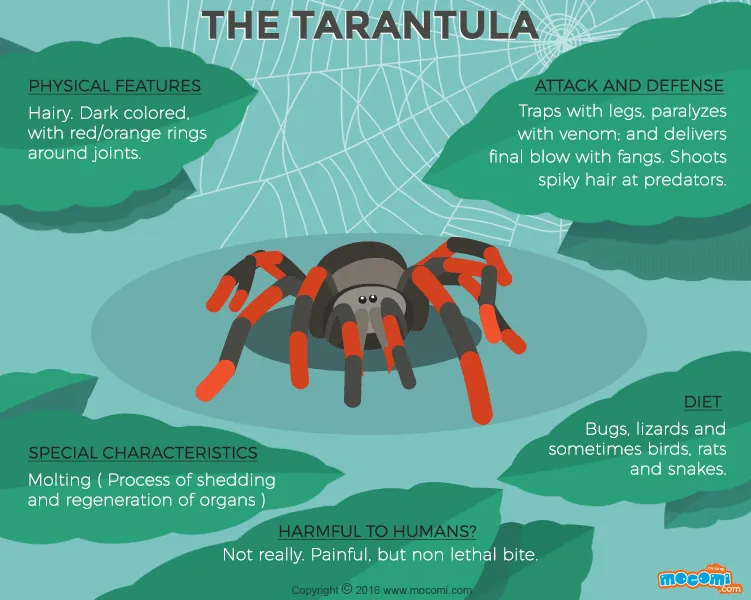What is a Tarantula?
Tarantulas are large, hairy spiders belonging to the Theraphosidae family. They are found in various habitats around the world, primarily in tropical and subtropical regions. These impressive arachnids are known for their size, often boasting leg spans that can exceed 10 inches, making them some of the largest spiders on Earth. Despite their intimidating appearance, most tarantulas are relatively harmless to humans, although their bite can be painful. They are nocturnal hunters, primarily feeding on insects, but larger species may also consume small vertebrates. With their diverse appearances and fascinating behaviors, tarantulas have captivated the attention of scientists and enthusiasts alike.
Defining Tarantulas
Tarantulas are characterized by their robust bodies and hairy legs. They have eight eyes arranged in two rows and possess powerful fangs for injecting venom. Unlike many other spiders, tarantulas have a relatively long lifespan, with females often living for several decades. They also have the ability to flick urticating hairs from their abdomen as a defense mechanism, causing irritation to potential predators. Their silk is used for various purposes, including constructing burrows, lining their nests, and wrapping their prey. Different species exhibit a wide range of colors and patterns, adding to their allure and making them popular subjects for study and admiration. The diverse characteristics make them unique within the spider world.
Tarantula Habitats

Tarantulas are incredibly adaptable creatures, found in a variety of habitats around the globe. They thrive in tropical rainforests, arid deserts, and even grasslands. Some species are terrestrial, living in burrows they dig themselves, while others are arboreal, residing in trees and shrubs. Their habitats are typically characterized by the presence of prey, suitable shelter from predators, and appropriate temperature and humidity levels. The specific habitat preferences vary greatly depending on the species, with some tarantulas preferring humid environments and others tolerating drier conditions. Understanding their habitat needs is crucial for both their survival in the wild and their care in captivity. The ability to adapt across the globe is a testament to their resilience.
10 Astonishing Tarantula Facts
Tarantulas Have Fangs
Tarantulas possess large fangs, or chelicerae, that are used to inject venom into their prey. These fangs are located on the front of their head and are strong enough to pierce the exoskeletons of insects and other arthropods. The size of the fangs varies depending on the species, with some tarantulas having fangs that can be over an inch long. Although they use their fangs for defense, they are primarily used for capturing and subduing prey. The venom paralyzes their victims, allowing the tarantula to begin the feeding process. The effectiveness of the fangs and venom varies across species.
Tarantulas Molt
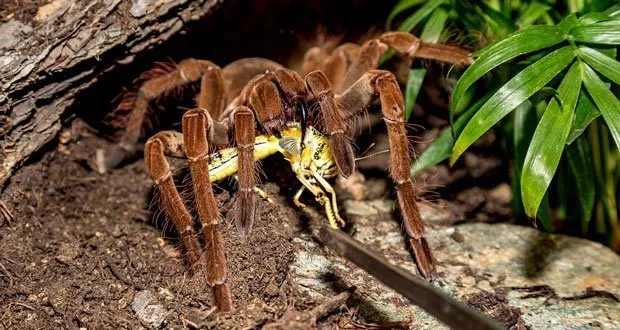
Like all arthropods, tarantulas molt, shedding their exoskeletons to grow. This process, known as ecdysis, involves the tarantula creating a new, larger exoskeleton beneath its old one. During molting, the tarantula becomes vulnerable, as its new exoskeleton is soft and delicate. They typically lie on their backs during the molting process, which can take several hours. The molting process is crucial for growth, allowing tarantulas to increase in size. After molting, the tarantula’s colors often appear more vibrant, and they may also exhibit changes in behavior and temperament. Molting is a fundamental aspect of their life cycle, enabling them to thrive.
Tarantulas Can Live for a Long Time
One of the most astonishing facts about tarantulas is their longevity. Female tarantulas, in particular, can live for a remarkably long time, often exceeding 20 years in captivity, and sometimes even longer. Male tarantulas, on the other hand, typically have shorter lifespans, often only living for a few years after reaching maturity. This difference is primarily due to the energy expenditure associated with mating and reproduction. The long lifespan of female tarantulas is a testament to their ability to adapt and survive in a variety of environments, allowing them to reach impressive sizes and contribute to the continuation of their species for many years.
Tarantulas are Venomous
All tarantulas are venomous, but the potency of their venom varies. While their venom is typically not lethal to humans, a bite can be painful and may cause localized symptoms such as redness, swelling, and muscle cramps. The venom is primarily used to subdue prey, such as insects, and is not designed to be highly toxic to larger animals. The effects of a tarantula bite can vary depending on the species, the amount of venom injected, and the individual’s sensitivity. It is always recommended to seek medical attention if bitten by a tarantula, especially if symptoms are severe or persist.
Tarantulas Don’t Need to Eat Often
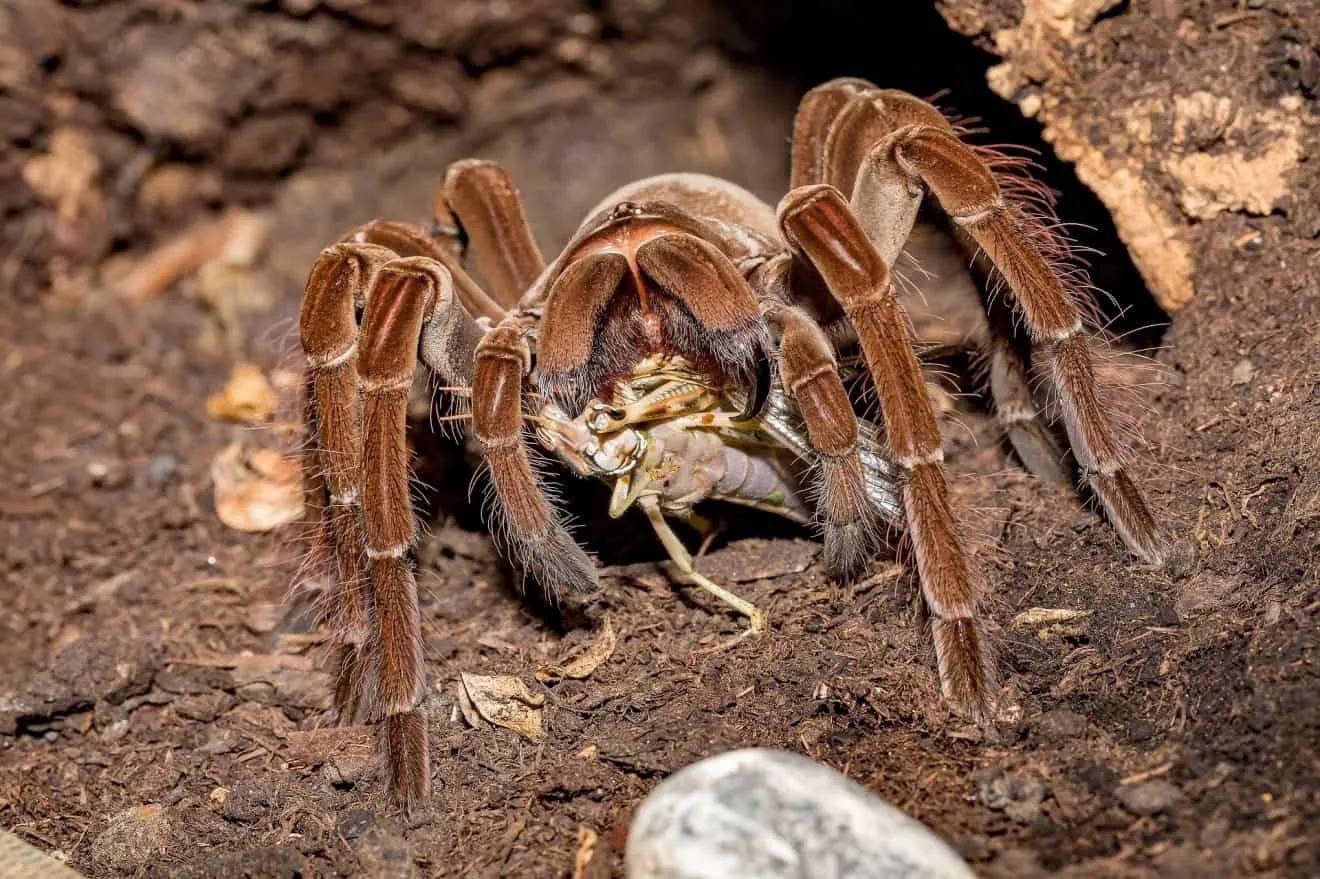
Tarantulas are efficient predators, and they don’t need to eat frequently to survive. In the wild, they may eat as little as once or twice a month, or even less frequently. Their metabolism is relatively slow, and they can conserve energy effectively. In captivity, tarantulas are typically fed once or twice a week, depending on their size and age. It is essential to provide them with a balanced diet consisting of insects, such as crickets or roaches, and to ensure they have access to fresh water. Overfeeding a tarantula can lead to health problems, so it’s crucial to follow appropriate feeding guidelines and observe their eating habits.
Tarantulas Can Climb Glass
Many tarantula species have the remarkable ability to climb glass. This is due to the tiny hairs, or setae, on their feet, which create a strong grip on smooth surfaces. These hairs act like millions of microscopic hooks, allowing them to adhere to glass and other materials. This ability is particularly useful for arboreal species that live in trees, allowing them to navigate their habitat efficiently. In captivity, this ability is often demonstrated when tarantulas climb the walls of their enclosures. This fascinating adaptation highlights the incredible evolutionary capabilities of these arachnids and how they survive in a variety of environments.
Tarantulas are Cannibals
Cannibalism can occur within tarantula populations, particularly in certain situations. Female tarantulas sometimes eat males after mating, a behavior that provides them with extra nutrients for egg production. Juvenile tarantulas may also prey on smaller tarantulas, especially in crowded conditions. Cannibalism is often triggered by factors such as scarcity of food, competition for resources, and the size and age of the tarantulas involved. While not all tarantula species exhibit cannibalistic behavior, it is a significant aspect of their behavior and a survival strategy in certain conditions.
Tarantulas Have Hairs that Irritate
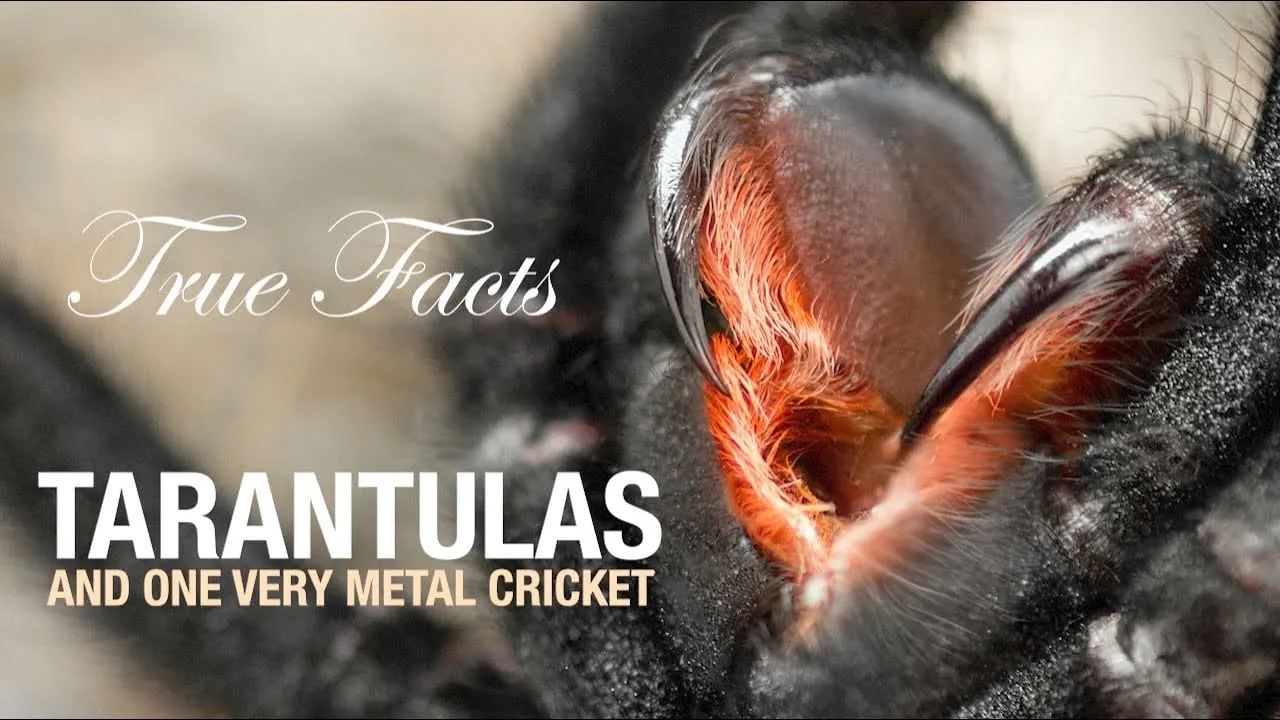
Many tarantulas possess urticating hairs, which are specialized hairs located on their abdomen. When threatened, they flick these hairs towards potential predators, causing irritation and discomfort. These hairs are barbed and can penetrate the skin, causing itching, redness, and even allergic reactions. The severity of the reaction varies depending on the species of tarantula and the sensitivity of the individual. This defense mechanism is a crucial part of their survival strategy, allowing them to deter predators without resorting to biting. Handling tarantulas should be done with caution to avoid contact with these irritating hairs.
Tarantulas Vary in Size
Tarantulas exhibit a wide range of sizes, with some species being quite small and others among the largest spiders in the world. The Goliath birdeater (Theraphosa blondi) is the largest tarantula species, with a leg span that can exceed 10 inches. Other large species include the Brazilian giant blond tarantula (Lasiodora parahybana). The size of a tarantula can be influenced by factors such as genetics, diet, and environmental conditions. The variation in size adds to the diversity of these fascinating arachnids and highlights their adaptability to different environments. Observing this variance is one of the most interesting aspects of tarantulas.
Tarantulas Can Swim
While not all tarantulas are strong swimmers, some species have been observed swimming in order to survive. These arachnids are known to be quite capable of crossing bodies of water when necessary. They do this by using their legs to propel themselves and can stay afloat for a surprising amount of time. This ability helps them to escape predators and to colonize new habitats, contributing to their widespread distribution. Their ability to swim is a testament to their adaptability and resilience, allowing them to navigate their environments and overcome challenges.
How to Care for a Tarantula
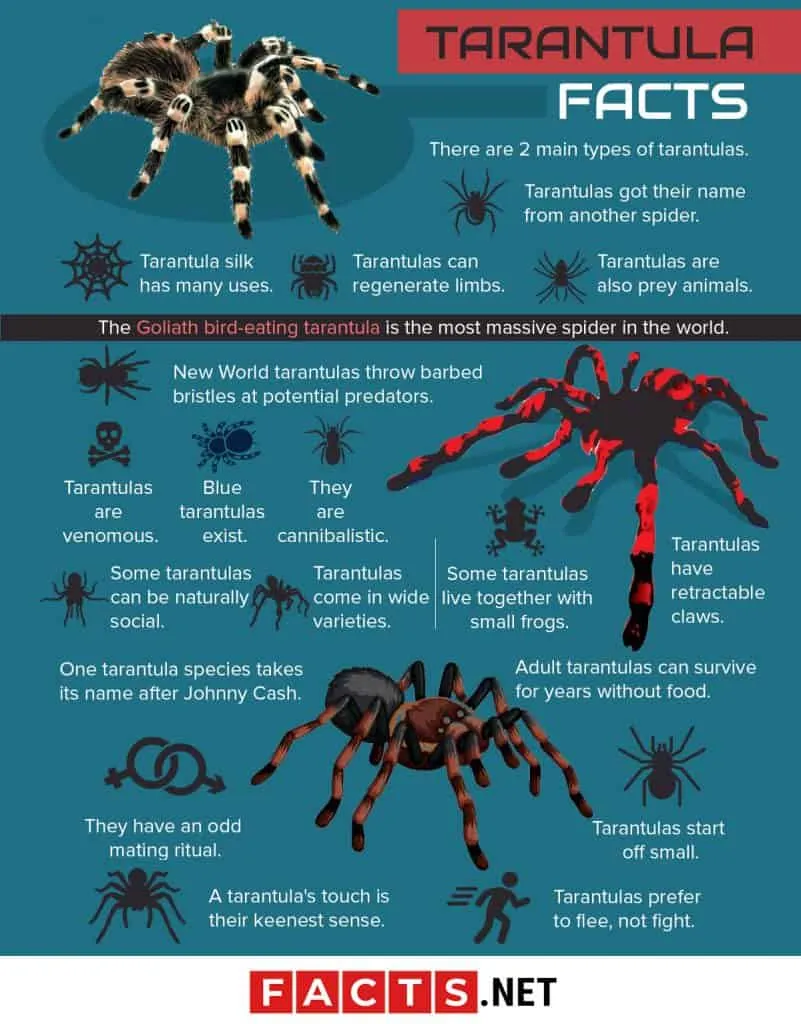
Setting Up a Tarantula Habitat
Setting up a proper habitat is crucial for the health and well-being of a tarantula in captivity. The enclosure should be appropriately sized, considering the species and its adult size. It should also be well-ventilated, with secure lids to prevent escape. The substrate, such as coconut fiber or peat moss, should be deep enough for burrowing species. Provide a water dish with fresh water and a hide, such as a cork bark or a hollow log, for shelter. Temperature and humidity levels should be maintained according to the specific needs of the tarantula species. Regular cleaning and maintenance are necessary to keep the habitat clean and hygienic.
Feeding Your Tarantula
Feeding a tarantula is a relatively straightforward process. The diet should consist primarily of insects, such as crickets, roaches, mealworms, or other commercially available options. The frequency of feeding depends on the tarantula’s age and species, but generally, adult tarantulas are fed once or twice a week. Offer food items that are appropriately sized for the tarantula to avoid potential issues. Ensure the prey is healthy and free from pesticides. Remove any uneaten food items after 24 hours to prevent mold growth. Monitor the tarantula’s weight and overall condition to adjust feeding amounts as needed. Providing a balanced diet and proper feeding is essential to ensure the tarantula thrives.
Handling Your Tarantula
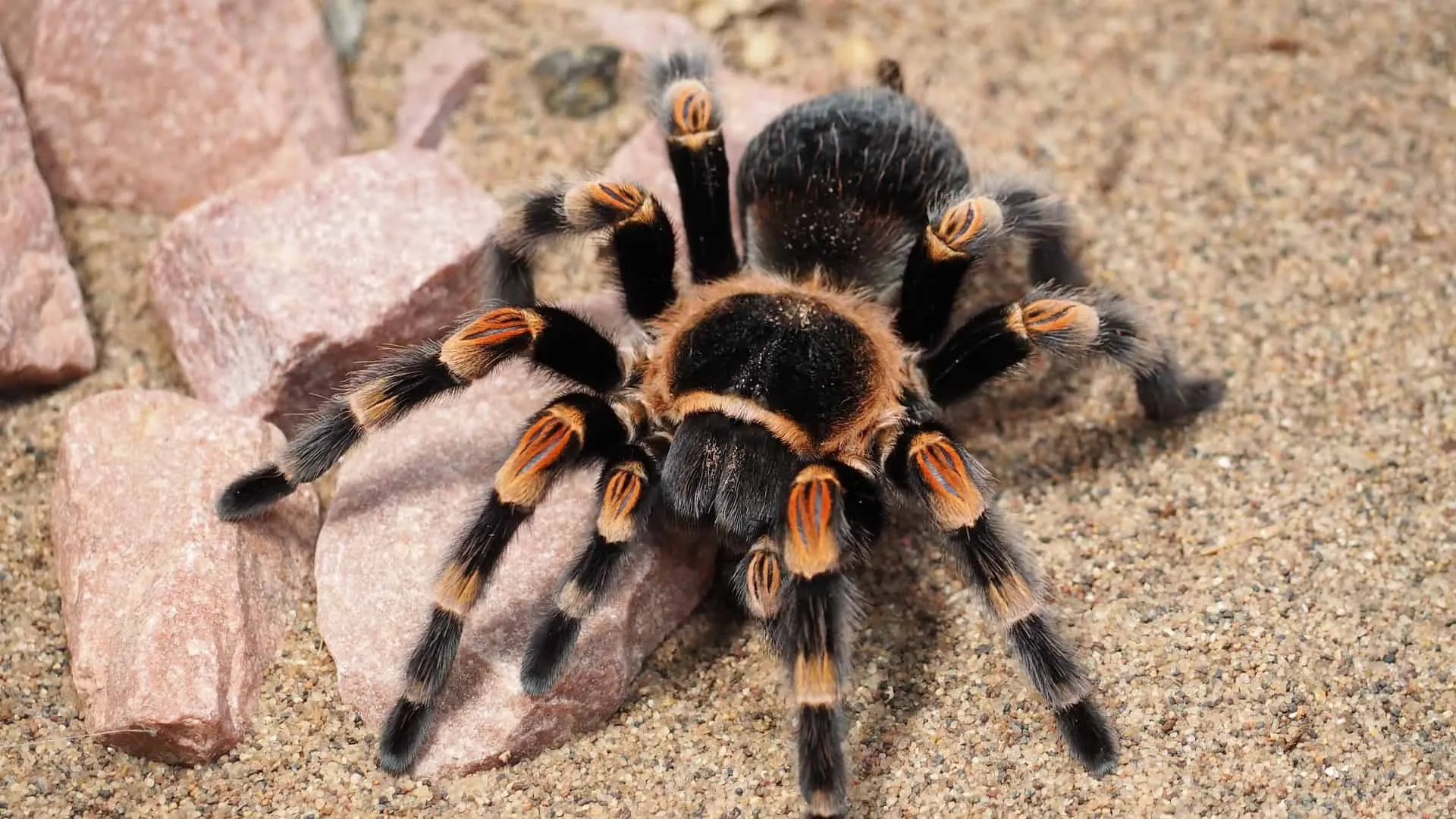
Handling a tarantula should be done with caution and respect for the animal. While some tarantulas are docile and tolerate handling, others are more skittish or defensive. Always approach the tarantula slowly and calmly. Avoid sudden movements that could startle the spider. If handling is necessary, do so close to the ground or a soft surface in case the tarantula falls. Use a soft brush to gently guide the tarantula onto your hand, allowing it to walk onto your palm rather than picking it up. Wash your hands thoroughly before and after handling a tarantula to prevent the spread of any potential irritants or pathogens. Handling should always be kept to a minimum, prioritizing the tarantula’s well-being and safety.
Conclusion
Tarantulas are truly remarkable creatures, with their diverse adaptations and fascinating behaviors. From their imposing size and venomous fangs to their ability to molt and live for many years, they continue to capture our attention. Understanding their needs, habitats, and unique characteristics can help us appreciate them even more. Whether you are a seasoned arachnid enthusiast or simply curious about these amazing spiders, there is always something new to discover about the world of tarantulas. By learning more about tarantulas, we can foster a greater appreciation for the diversity and wonder of the natural world.
